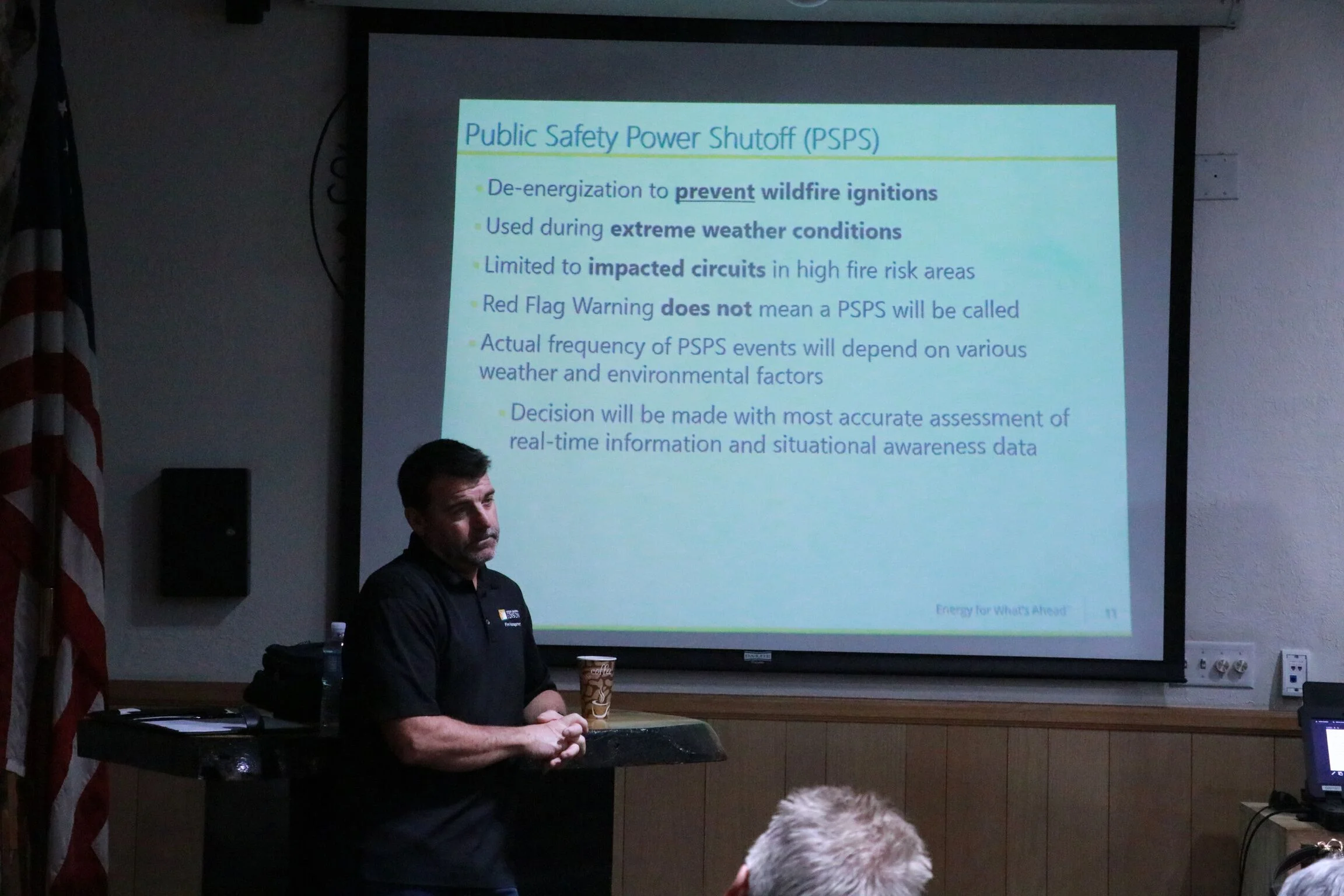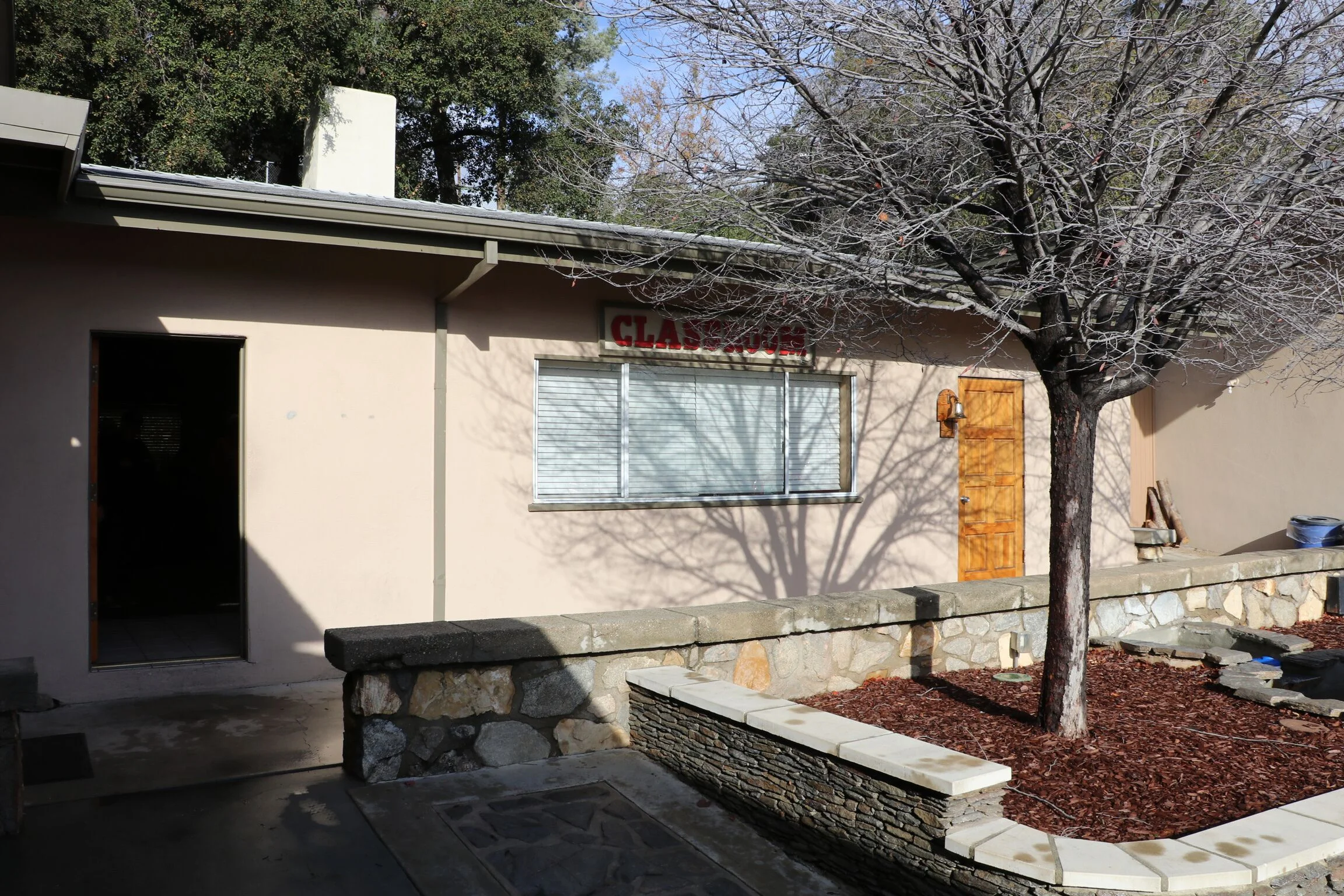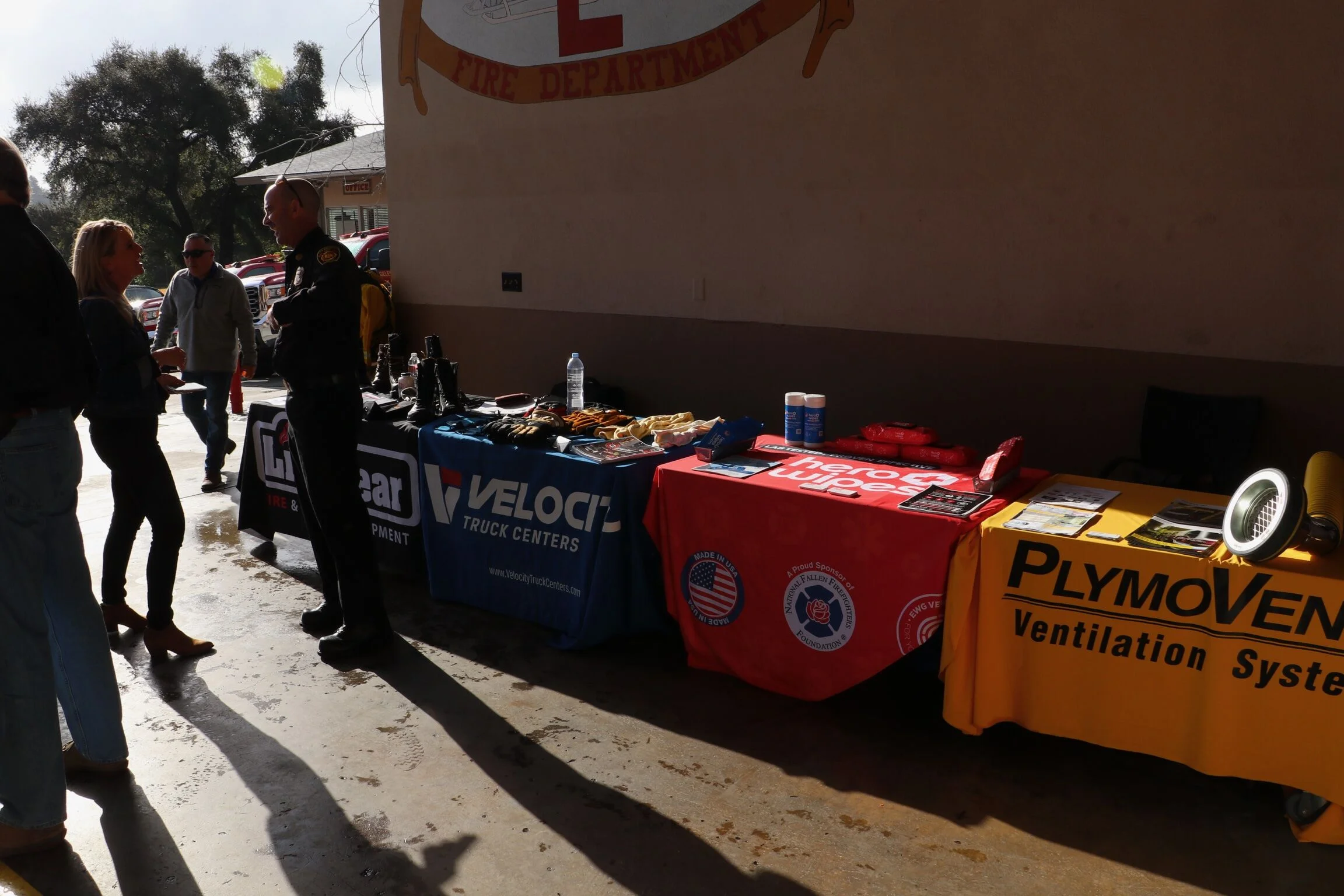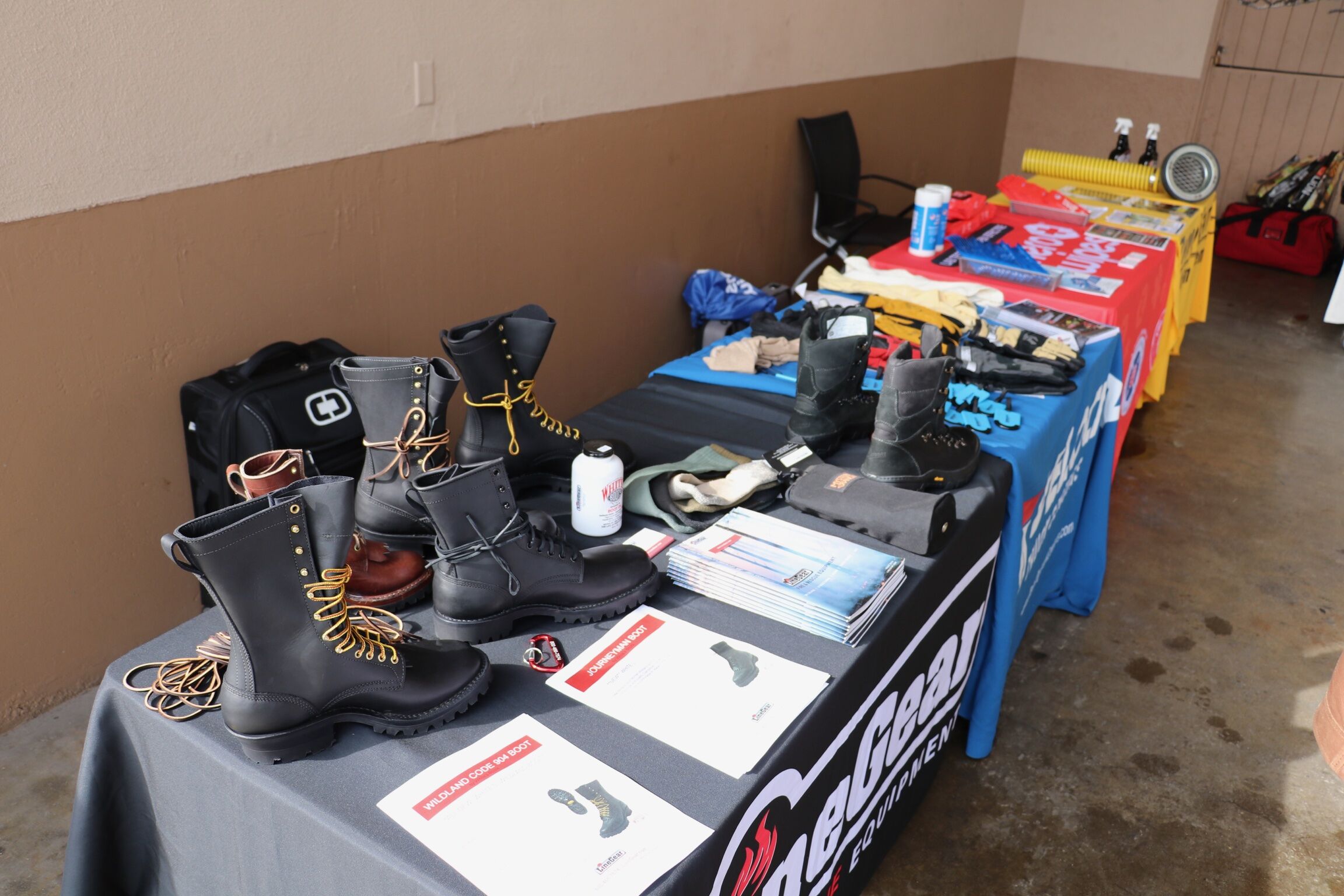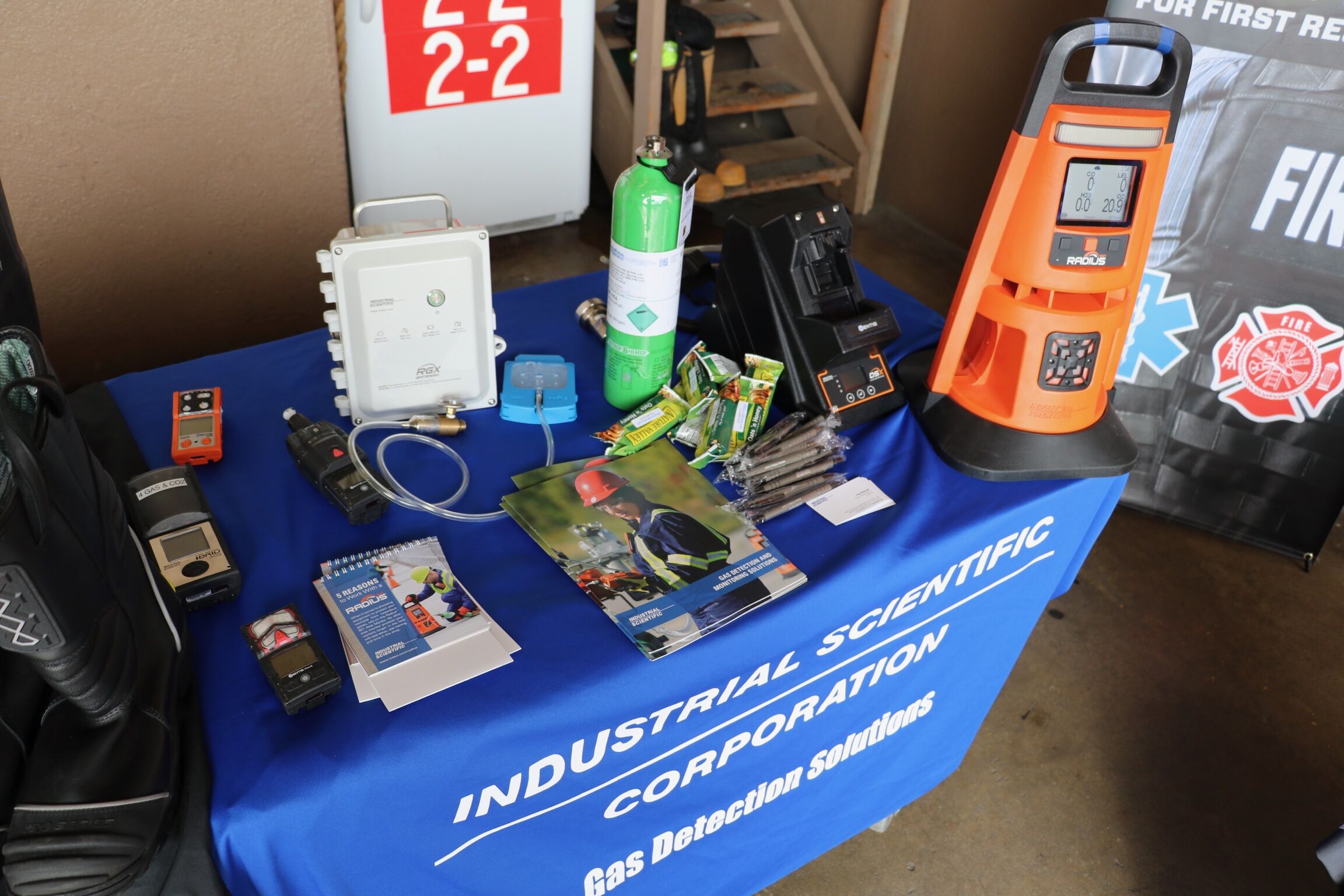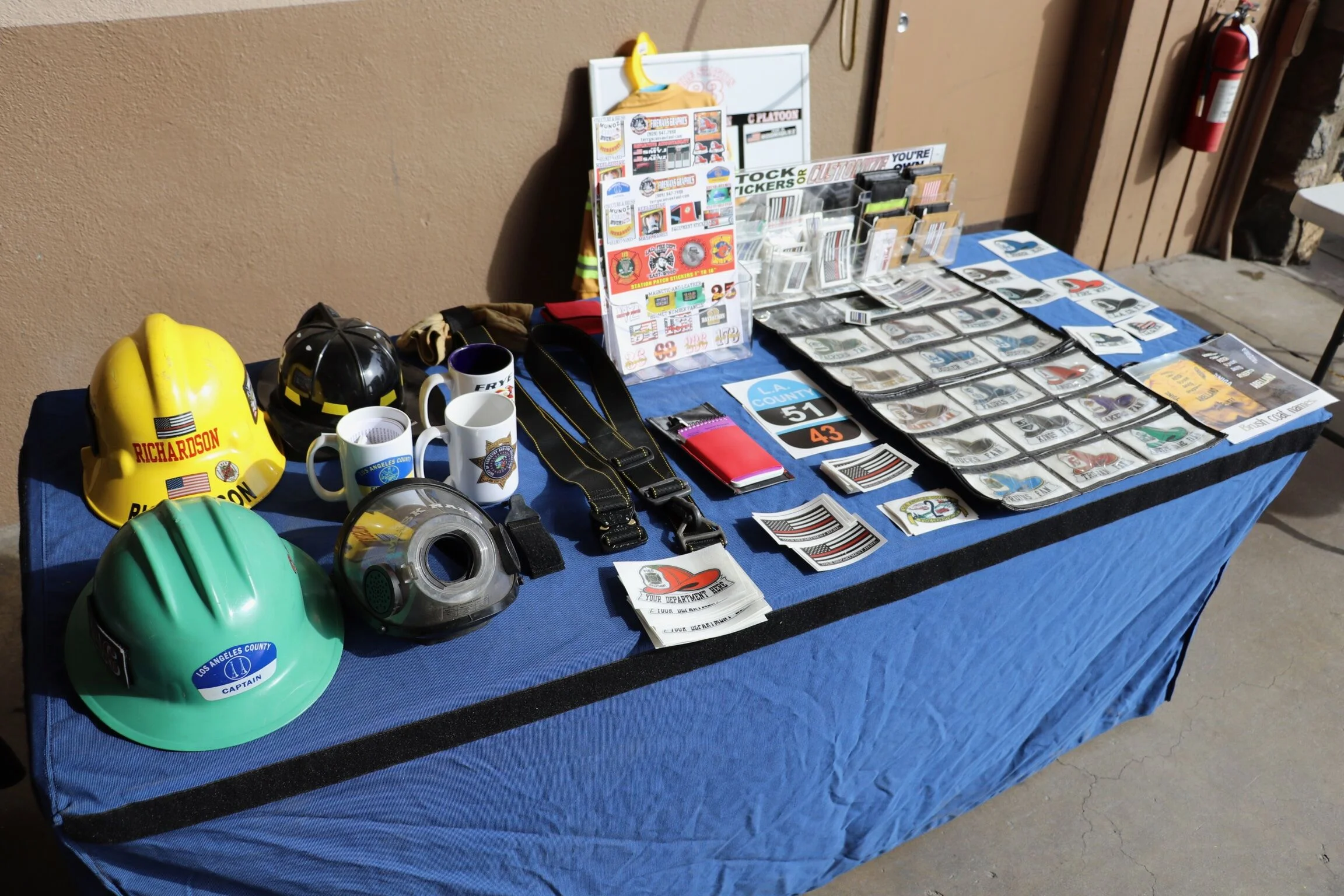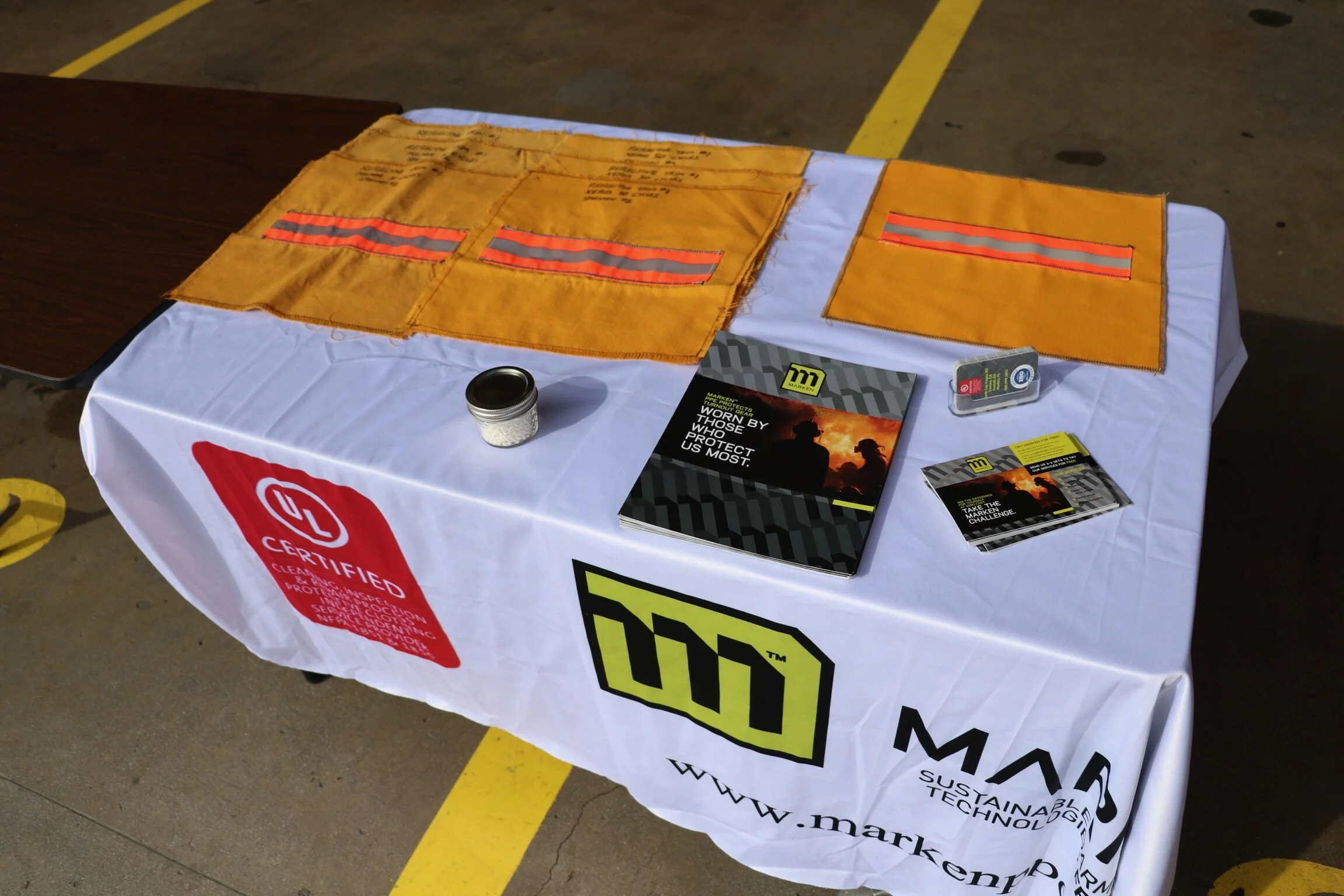SAFER Meeting Minutes
August 16, 2019
SAFER Board Attendees: President Quinn , Past President Duran , Seely, Past President Gurrola, VP Weise / Social Media Liaison Rabe
Glendale Fire Department Sta 21 – Admin Headquarters
0900 Meeting called to order – President Quinn opened the February 2019 SAFER meeting and introduced Glendale Fire Department Chief Lanzas who welcomed SAFER and began the meeting by leading the pledge of allegiance. He related Glendale Fire Department provides “all risk” services to 32 square miles with 9 engine companies, 3 truck companies (4 man staffing - P/M Engines with private EMT-1s for transport). Glendale Fire Department is “A full service, all risk department”. Thanks to Glendale Fire Department for hosting the February 2018 meeting of SAFER. Chief Lanzas related his USAR experience and highlighted to evolution of Glendale’s USAR program. He related they have recently combined their USAR and HazMat programs into a “Special Operations Program”. Chief Lanzas related the organization of the “Verdugo Fire Dispatch” for Region 1 Area C communications center. He related the Glendale Fire Departments “Tower Training” program as a tuff, performance based endeavor. He related they are running a 16 person class at this time.
Thanks to Veridian Fire Equipment – Kirk Owen for providing the morning hospitality.
President Quinn related the recent improvements to the website and the move towards a new sign-in process.
Committee Reports:
NFPA – Dick Weise – No NFPA report
CalOSHA – CalOSHA – Scott Hudson – Hemet FD (Retired) Emergency Standard for Wildfire Exposure to smoke is out as an emergency standard: All outdoor workers exposed to fire smoke may use a N-95 mask. May also move / relocate to cleaner air when practical. Firefighters are exempted from the standard. Exceptions are provided for persons assisting in emergency evacuation. Mandatory For companies to provide protection to employees – puts responsibility on “supervisors” to recognize the smoke condition and protect employees when possible.
#1 cause of death in CA (from CalOSHA) is falls, prior was traffic accidents.
Discussion on “Bomb laden drone’s” as a potential for terrorists.
Apparatus – No specific committee report.
Safety and Training- No specific committee report.
Technology – See Website, Facebook, twitter, linkedin
Treasurer – Doing OK, can take membership renewals here at meeting. Improvements on the website – let him know if you have any suggestions. Thanks to Tracy and Tony for work on the website.
Communications – Tracy / Tony:
Vendor Liaison
Behavioral Health report:
Program: “Regional Task Force 4 Response to Camp Incident”
Presenter: Captain Robert Sepulveda – Pasadena Fire Department / RTF 4 USAR Coordinator
(323) 497-4259 / rsepulveda@cityofpasadena.net
Short Video: Firefighter interview of Camp Incident USAR Search / Recovery Deployment.
RTF 4 Agencies: Glendale, Pasadena, Alhambra, Arcadia, Monterey Park
Discussed differences of FEMA USAR Task Forces vrs California OES USAR Task Forces (RTF’s)
AAR:
Camp Fire Incident
Montecito vs Camp USAR
Verdugo Fire Com Cnter
RTF 4
*No-Alert Response
* Text Group for the RTF was utilized as some units aren’t equipped with MDC’s. All members in group receive all comm’s.
Largest Crime Scene in CA history – Sherriff’s in charge of incident – issues with USAR – Law side relationship
“Priority One List” : A Law term indicating “persons missing and last known location”
Tree Markings by Power Company:
P1 Trees: Eminent failure
P2 Trees: Will fall eventually
P3 Trees: Will need to be removed
PowerPoint: Insert here:
CAMP US&R ASSIST
RTF-4 DEPLOYMENT AAR
BY: CAPTAIN ROBERT SEPULVEDA, JR.
RTF-4 COORDINATOR
AAR OBJECTIVES:
1) Camp Fire Incident
2) Montecito vs Camp US&R Assist Map
3) Verdugo Fire Communications Center
4) RTF-4 Deployment (what was planned)
5) RTF-4 Search Operations (what happened)
6) Incident Issues (why did it happen)
7) Safety Issues
8) RTF-4 Lessons Learned (what can we do better next time)
9) Incident Photos
10) Conclusion
CAMP INCIDENT
On November 8, 2018 at approximately 0633 hours, a vegetation fire erupted in Butte County (Pulga, CA) pushed by 60 mph winds, resulting in a 153,336 acres burned, 13,972 destroyed residential structures, 528 commercial, 4,293 other buildings, 86 confirmed civilians fatalities, and 3 still missing. (source: CAL Fire website)
On the same day the Woolsey Fire started resulting in 96,949 acres burned, destroyed 1,643 structures, and 3 civilian fatalities. This caused a significant draw down of resources in California.
CAMP INCIDENT:
• On November 12th 2018, OES Deputy Chief Collins requested the availability of RTF’s in preparation for a possible request. Only 4 RTF’s were able to fill. (4, 5, 6, 10)
• On November 15th 2018, OES Deputy Chief Collins requested a second RTF availability for a “no-alert” response.
• RTF-4 Coordinator notified OES that RTF-4 was ready for deployment on both dates.
• On November 16, 2018, Butte County Sheriff requested through OES & California Master Mutual Aid System 4 US&R FEMA Task Forces (Type 3 configuration) and 5 US&R Regional Task Forces, which would be the largest search operation, deadliest and most destructive fire in California history.
• On November 16th, at 1600 hours, OES notified Region 1 for the request of US&R TF’s and US&R RTF’s.
• VFCC notified RTF-4 Coordinator of the request and RTF-4 immediately filled the request (E-1).
• RTF-4 was dispatched at 1800.
VERDUGO DISPATCH:
Strengths:
• Notified RTF-4 Coordinator immediately when request came in.
• Asked what time to dispatch RTF-4 and what rally point to utilize.
• Filled out ROSS order personnel correctly (29 technical specialist).
• RTF-4 text group was utilized with all info needed (no MDC).
Improvement/Recommendations:
• Dispatched RTF-4 twice. (1st was RTF-4, 2nd was the apparatus).
• Apparatus entered in ROSS didn’t match what went on deployment.
• Continue to participate in quarterly RTF-4 deployment drills.
• Utilize RTF-4 daily roster for ROSS/personnel/apparatus info.
• New RTF-4 daily sign up website (in service 7-11-19
1) CA RTF 4: Verdugo
2) CA RTF 5: Fresno
3) CA RTF 6: San Bernardino County
4) CA RTF 10: Orange County
5) CA RTF 12: Santa Barbara County
6) CA-TF 3: Menlo Park
7) CA-TF 4: Oakland
8) CA-TF 6: Riverside
9) CA-TF 8: San Diego
RTF-4 DEPLOYMENT;
Strengths:
• Verdugo was notified by RTF-4
• Coordinator for possible request.
• Team was rostered with
• Verdugo and Region 1.
• TFL was identified by 0700.
• North Rally point (Rose Bowl) was used.
• Team had 4 drills & 1 deployment
that year.
• Adjustment apparatus footprint.
• (U37-OOS, U61, U29, Van -Added)
• Travel Plan/Channel was
identified.
• Lead vehicle was US&R 32
• Last vehicle was TFL.
• Fuel stops were pre-planned
(Bakersfield/Fresno).
• Fresno was final rest period
location (0115).
• On November 18th, RTF-4 left Fresno at 0700 en-route to Oroville Forebay Base Camp.
• Stopped in Sacramento for fuel/food at 1100.
• RTF-4 arrived at Forebay Base Camp at 1230 and checked in
with OES (first RTF). Report time was 1300.
• RTF-4 TFL’s attended US&R briefing at 1700.
• RTF-4 was put on rest period and was informed of assignment for next operational period on November 19th.
Improvement/Recommendations:
• Most personnel didn’t have rain gear.
• Glendale had staffing issue which delayed enroute time.
• Alhambra only sent 2 instead of 3.
• Arcadia assisted by bringing 4 instead of 3.
• Structural Specialist was not needed.
• 28 instead of 29 members.
• Left North Rally point at 2030.
• E701 could only get fuel at certain gas stations. (credit card issue)
• Fuel stops took 45 minutes.
• Contact OES for hotel approval.
• US&R 32’s alternator went OOS.
• Challenge to keep footprint together when traveling in city.
• Code 3 was utilized when needed.
• US&R Base Camp was shared with Law
Enforcement.
RTF-4 OPERATIONS:
CREEK BRANCH
On November 18th, RTF-4 was assigned to “Creek Branch” for large area search and recovery, GPS data collection of the Lower & Upper Honey Run area. TF-6 assigned at 1100.
Strengths:
• TFL’s had team pre-deploy to Creek
• Branch to set up BoO & prepare for search.
• BoO was set up in a parking lot.
• All 4 utility vehicles (UTV’s) and small vehicles were used for search.
• 11 two/three member search teams were deployed at 0940.
• Search Manager kept one TSS for logistical support
• .Search Teams used GPS correctly.
• Primary search was completed in the entire geographical area within 5 hours.
• 429 structures rapidly searched.
• 192 structures destroyed.
• GPS data collection was emailed to Situation Unit Leader.
• TFL’s debriefed with Creek Branch on our findings.
• Search Teams used color coded system for identifiers (lessons learned from Montecito).
• TFL’s attended the US&R debriefing back at base camp at 1700.
Improvement/Recommendations:
• Law enforcement briefing were at 0700.
• US&R briefing were at 0800 (delayed search ops).
• Branch briefing was 0830 (delayed search ops).
• Search operations terminated at 1600 every operational period for safety.
• Coms were terrible from terrain and large geographical area of the Branch.
• Better team briefing was needed.
• Need a better internal team decon plan when out in the Branch.
RTF-4 OPERATIONS:
CREEK BRANCH
On November 19th, RTF-4 was assigned to “Creek Branch” for large area search and recovery (primary/secondary), GPS data collection of the Lower & Upper Honey Run area. RTF-4 was only US&R RTF assigned to this branch.
• Strengths:
TFL’s had team pre-deploy to Creek Branch to set up BoO & prepare for search.
Creek Branch briefed TFL’s at 0800 to get the team out faster.
BoO was set up in same parking lot.
All 4 utility vehicles (UTV’s) and small vehicles were used for search.
Better team briefing was conducted with objectives.
11 two/three member search teams were deployed at 0900.
Search Manager kept one TSS for logistical support.
FEMA search markings/Flagging tape were utilized when possible.:
RTF-4 utilized engine strike teams for delayering.
Creek Branch briefed TFL’s at 0800 to get the team out faster.
186 structures were primary searched.
70 structures were secondary searched.
Anthropology was requested to 7 locations for remains collection.
TFL’s debriefed with Creek Branch on our findings.
GPS data collection was emailed to Situation Unit Leader.
TFL’s attended the US&R debriefing back at base camp at 1800.
Improvement/Recommendations:
• TFL’s were asked to attend 0700 law enforcement briefing and 0800 US&R briefing.
• Search operations terminated at 1600 every operational period for Safety.
• Coms were terrible from terrain and large geographical area of the Branch.
• Secondary search (delayering) caused a much slower operation.
• Previous engine strike teams GPS data was not getting back to Situation Unit Leader which caused RTF-4 to repeat the GPS location surveys.
RTF-4 OPERATIONS:
CONCOW BRANCH
On November 20th, RTF-4 was assigned to “Concow Branch” for large area search and recovery (primary/secondary), GPS data collection. RTF-4 was only US&R RTF assigned to this branch for this period.
Strengths:
• Had a good search system down.
• BoO set up at good location.
• 11 two/three member search teams were deployed at 1000.
• Search Manager kept one TSS for logistical support.
• Search Teams used GPS correctly.
• 107 structures were primary searched.
• 93 structures destroyed.
• Completed search operations at 1530.
• TFL’s attended US&R debriefing at 1730.
Improvement/Recommendations:
• TFL’s were asked to attend 0700 law enforcement briefing and 0800 US&R briefing again.
• Search operations time frame was from 1000-1600 (6 hours).
• Coms were terrible from terrain and large geographical area of the Branch.
• Branch was larger than Creek Branch.
• Engine strike teams were searching the area but their GPS data wasn’t getting back to the Situation Unit Leader.
RTF-4 OPERATIONS:
CONCOW BRANCH
On November 21st, RTF-4 was assigned to “Concow Branch” for large area search and recovery (primary/secondary), GPS data collection. RTF-4 was only US&R RTF assigned to this branch for this period.
Strengths:
• Concow Branch briefed TFL’s at 0730 to get the team out faster.
• BoO was set up good location.
• 11 two/three member search teams were deployed at 0900.
• Search Manager kept one TSS for logistical support.
• 76 structures searched.
• 67 structures destroyed.
• Anthro called out 3 times to collect remains.
• Search operations were completed at 1300.
• Reassigned to another area of the Branch.
• Branch realized how fast an RTF can work vs Engine strike team.
• TFL’s attended US&R debriefing at 1800.MA search markings/Flagging tape were utilized.
Improvement/Recommendations:
• TFL’s were asked to attend 0700 law enforcement briefing and 0800 US&R briefing again.
• Search operations time frame was from 1000-1600 (6 hours).
• Coms were terrible from terrain and large geographical area of the Branch.
• Branch was larger than Creek Branch.
• Engine strike teams were searching the area but their GPS data wasn’t getting back to the Situation Unit Leader.
• Concow Branch was getting frustrated because the Engine strike teams GPS data wasn’t showing up on map as searched.
• ATFL recommended to Branch to only have RTF-4 perform GPS data collection. Branch concurred.
RTF-4 OPERATIONS:
CONCOW BRANCH
On November 22nd, RTF-4 was assigned to “Concow Branch” for large area search and recovery (primary/secondary), GPS data collection. RTF-4 was only US&R RTF assigned to this branch for this period.
Strengths:
• 146 structures searched.
• 76 structures destroyed.
• Branch briefed TFL’s at 0730 to get RTF-4 out to Branch faster.
• 11 search teams deployed at 0845.
• Search operations completed at 1245.
• Reassigned to another area in Branch to search.
• Anthro called out 6 times to collect remains.
• TFL’s attended US&R debriefing at 1700.
Improvement/Recommendations:
• 2 - 4 inches of rain occurred.
• Some members didn’t have rain gear.
• Rain gear issued at Base Camp was poor quality.
• 1 utility truck got stuck in mud. UTV was used to pull out.
RTF-4 OPERATIONS:
CONCOW BRANCH
On November 23rd, RTF-4 was assigned to “Concow Branch” for large area search and recovery (primary/secondary), GPS data collection. RTF-4 was only US&R RTF assigned to this branch for this period.
Strengths:
• 147 structures searched
• 130 structures destroyed.
• Branch briefed TFL’s at 0730 to get RTF-4 out searching faster.
• 11 search teams deployed at 0900. Search operations completed at 1445.
• Used E701 for Decon in Branch.
• TFL’s attended US&R debriefing at 1700.
Improvement/Recommendations:
• Continued to rain saturating ground.
• Minor wash out of dirt roads.
• Difficult to spray paint because ground.
• Wooden stakes with FEMA stickers would’ve worked best.
• 1 utility truck got stuck in mud. UTV was used to pull out.
RTF-4 OPERATIONS:
CONCOW BRANCH
On November 24th, RTF-4 was assigned to “Concow Branch” for large area search and recovery (primary/secondary), GPS data collection. RTF-12 was also assigned to the branch for this period. Demob of FEMA TF’s and RTF’s started.
Strengths:
• 47 structures searched. 41 structures destroyed.
• TFL’s briefed RTF-12 TFL’s on RTF-4’s progress and search operations advice. RTF-4
• Branch got priority one list and RTF-4 performed target searching.
• 11 search teams deployed at 0930.
• Engine strike teams used for delayering.
• Cell phone pics were sent to Anthro.
• Search operations completed at 1500.
• TFL’s attended US&R debriefing at 1700.
Improvement/Recommendations:
• With an additional RTF in the Branch, a lot of area got covered much faster.
• Could of used 2-3 RTF’s in the Branch.
• In the future, let RTF’s do all the GPS data collection in place of Engine strike teams.
Incident Issues:
• GPS data from engine strike teams weren't showing up on maps.
• RTF’s didn’t agree what was being called “secondary search”. (delayer to foundation)
• Search markings were wrong from the initial action companies resulting in RTF’s to mark correctly.
• Information/location of the last point seen of victims was never relayed to TF’s/RTF’s.
• FEMA stickers were not available.
• January 2019, OES shipped search marking stickers to RTF’s for future deployments.
FEMA (lime green)
RTF (orange)
• TF’s/RTF’s had to be relocated from Forebay Base Camp to Chico Base Camp because Forebay was in a flood zone.
• No sample photos were shown to RTF’s on what bones looked like after incineration.
• Handouts or any info on human remains would’ve been helpful.
• The reported missing persons list kept changing daily.
• Base ran out of US&R supplies (paint, flagging).
• Rain gear needed to be a better quality.
• K9’s were having issues with Anthropology results.
• Branch Directors didn’t have US&R background.
• Coms were bad on UHF (UTAC-41) and VHF (V-Fire24).
• Cell phone service was bad.
• Encrypted radios worked better but law enforcement didn’t have enough for US&R.
• TF’s/RTF’s should’ve been called at least 1 week earlier.
• Branch Director received the priority 1 list on the last day. RTF’s & TF’s - Should’ve had it on first day (same as Montecito).
• Branches were geographically too large.
• Multiple SOFR’s were needed in each Branch.
•
INCIDENT CHALLENGES
• Septic tank covers burned creating fall hazards
• Smoke/ash was inhalation hazard
• Collapsed structures
• Compromised chimneys
• Deceased human/animals
• Sharp objects (glass/metal/wood etc.)
• Electrical power lines down
• Thousands of unstable trees (snags)
• Street/highway access blocked by power lines.
• One way in one way out
• Steep terrain/rolling rocks
• Rapidly changing weather (wind, rain, fog)
• Increasing water flows or rising waters in streams
• Mud debris flow
• Wildlife and domestic animals that survived
• Repopulation of public
• Fatigue (physical and mental)
TASK FORCE LEADER:
• Footprint is large, but can be managed.
• All apparatus should have VHF/BK radios.
• All RTF-4 agencies need to have rain gear.
• Having ATFL stay with TFL was important for navigation and coms.
• Forebay Base Camp was in a flood zone which resulted in moving all US&R resources to Chico Base Camp.
• Sending out RTF-4 prior to Operational briefings gave a little more time for search.
• US&R briefings were at 0800 after 0700 law enforcement briefings which caused delay in search timeframe.
• US&R debriefings were good because we discussed any issues with US&R Branch Director to fix for the next operational period.
• All RTF-4 agencies maintained a great attitude throughout the incident.
• RTF-4 quarterly drills have paid off for deployments.
• US&R resources could’ve been used earlier in this incident.
ASSISTANT TASK FORCE
LEADER:
• Made team assignments when we arrived at Forebay Base Camp.
• Ensured that the operational objectives where being met.
• Supervised Search Manager (No RM needed).
• Notified Branch when Anthro was needed.
• Assigned food/water/logistics to personnel.
• ICS 213 and 214 for the team.
• Law enforcement contact.
• Communications with Branch and team.
• Notified engine strike teams for delayering.
• Team welfare (mental and physical)
• PPE/respiratory protection/decon
• Public Relations
• Ensured search reports were emailed to Situational Unit Leader and followed up at Base Camp.
• Built relationships with Law and Anthro.
• Identified the safety issues.
• Collected GPS units half way through the operational period and delivered them to BoO for data collection.
• Accountability of members when they were searching.
• Used iPad for navigation and documentation.
• Checked in with Verdugo in am/pm
ASSISTANT SAFETY
OFFICER:
• Due to the geographical size of Branch, all Search Team Leaders had to assume ASO for their team.
• Identified safety hazards and made them known.
• Communicated with ATFL for personnel accountability checks.
• Appropriate PPE including respiratory protection.
• “Truly on your own environment”.
• No RTF-4 injuries reported on deployment.
SEARCH MANAGER:
• Team worked extremely well together.
• Information and direction from TFL and ATFL was disseminated quickly, clearly, and plan of action made the job of Search Manager extremely easy.
• Half way through the deployment it was suggested to switch up our search teams. This increased our teamwork and forced members to partner with individuals from different departments. This really help solidify our team and created a bond for many of us.
• This was my first RTF deployment and my first time as Search Manager. I was given the trust to run my searches as best as I saw fit. It was extremely reassuring to have the backing of my TFL and ATFL to coordinate my searches.
• RTF-4 footprint had a great selection of vehicles to work with. Instead of utilizing large 5 to 10 ton vehicles, we operate with much smaller vehicles and gators.
• The UTV’s gave us the ability to drive through the communities rather than walk. If we had to walk the areas, we would’ve not searched 1100 structures.
SEARCH TEAM LEADERS
• Team was managed well by TFL/ATFL (leadership and professional).
• Team was safe. No injuries reported.
• ICS was used correctly.
• Coms where tough but we managed.
• 2-3 person teams worked great.
• UTV’s and 4x4 vehicles were the correct vehicles.
• Using the strike teams to delayer made us feel comfortable calling secondary search complete.
• Great having E701 for decon purposes.
• There was some confusion early in the incident on what search markings to utilized but was cleared up later.
• Having 2 GPS units allowed searching to continue.
• Search time was only 4-6 hours in a 12hr operational period
.
RTF-4 LESSONS LEARNED
• We didn’t have ALS capabilities (01-01-19 E701 ALS on drills/deployments)
• We need logistics trailer (ALH assigned)
• iPads are needed for search teams (MPK assigned)
• Awning for BoO - Inclement weather created difficulties during briefings. Awning would create a area for us to congregate without getting soaked.
• Mobile VHF/UHF radio communication from inside the BoO was unsatisfactory. The handheld portables had difficulties reaching the Search Manager from inside the trailer. A higher power mobile radio with a roof mounted antenna would eliminate the issue.
• The ability to utilize the gators for transportation was invaluable with the terrain we had, but utilizing the gators also exposed a few needs to make them more reliable. Spare emergency tire tubes are a necessity as we blew 4 tires throughout the duration of the deployment. The gators are currently not designed for inclement weather. Adding a windshield would help keep the occupants dry.
• Rain gear and Uniformity - full set of waterproof rain gear would help keep members dryer longer and give us the ability to work longer hours. Although we embrace our individuality, we are a team and recognized as a team when we operate under the RTF platform.
• Additional computer is needed in BoO. Searching over 1100 structures in such a short time was not an easy task. TSS logistics had to input and name all 1100 waypoints. Having an additional computer would allow an additional TSS logistics to assist in large scale search operations and help ease the burden of data entry.
• Large tent for down time, drying of PPE/Clothing, or sleeping quarters.
• Entire team needs to have air purifying respirators.
• GPS- drop the way point where you think the front door was! Not on the street.
Incident Photos:
CONCLUSION
This was the second deployment for RTF-4 in 2018.
Many new lessons were learned from this incident that will make us a stronger team.
RTF-4 was alone almost the entire incident and covered large areas.
RTF-4 Deployment policy and ROSS was updated after this incident.
RTF-4 deployment quarterly drills have paid off (training). 6 agencies truly working as ONE.
RTF-4 must remain in a state of readiness. US&R is becoming the new norm in the State.
PAS just got a new UTV bringing the total to 5 UTV’s on RTF-4.
RTF-4 is fully supported by all 6 agencies Fire Chief’s and needs to continue.
Visit our website and social media:
www.cartf4.com
www.Instagram.com/ca_rtf_4
www.twitter.com/ca_rtf_4
RTF-4 EXECUTIVE BOARD:
• PAS BC AC Brown- RTF-4 Program Manager
• PAS Captain Robert Sepulveda- RTF-4 US&R Coordinator
• MPK Captain Richard Tullius- US&R Coordinator
• ARC Captain Joe Herrick- US&R Coordinator
• ALH Captain Jose Herrera- US&R Coordinator
• GLN Engineer Dan Claridge- US&R Coordinator
• MRV Captain Chris Huson/Engineer Alex Arellano- US&R Coordinator
1045: Questions / break for vender networking
Marken – Operates a certified maintenance facility in Corona and Las Vegas.
Michael Schlags – Cobra Rescue Litters – Related new “soft” rescue bags for carrying victims, has sold several rescue carts to agencies in the area.
Sal Baulm – TSI – Offers Respiratory Fit Testing to Fire Service agencies.
Jeremy Verderber - Marken Emergency Services – Has handheld TIC’s Buy 5 get one free
Eric Higgins - Bestway Laundry Solutions – In Corona, has five tech’s in So Cal. Will consult to handle extractor needs for fire agencies.
Mike McBride – Fox Fire Lighting – Related products for lighting scenes. Related their contributions to the Camp fire
David Molinatti – Industrial Scientific - Gas Monitors are available for use on drone devices, can be connected together to monitor a large area and “alarm” at each monitor.
Jimm Cleary – Plymovent – Related the exhaust removal systems they offer to the fire service. Plymovent has magnetic hose connections that many agencies are changing to. This eliminates the air collar connection.
Tom Aioki – Fire Alarm Fire – Distributes breathing air compressors
Bob Mercurio – WolfPack Gear – Supplies many agencies with quality web-gear and equipment pouches.
Jeff – AllStar Fire Equipment – Supplier of fire service equipment
Tracy Rabe – Line Gear – Supplier of PPE, wildland ensembles, boots, gloves and fire fighting equipment.
Kirk Owens – Veridian Fire Equipment – Has new gear / PPE products. Supplier of hoods, gloves , PPE and NFPA ensembles.
Chuck Nunley – AE (Armor Express) – Discussed recent events nationally as related to body armor for first responders
Jeff Wilkerson – Camp Pendleton FD (Retired) – Related the City of Irvine has signed an MOU to provide 5 acres form the California Fire Museum. Garden Grove FD consolidated with the OCFA today. Attended the Garlic Festival but had left before the shooting.
Dick Wise – LACoFD – Announced the City of Vernon will be joining the county fire department later this year. Co has changed their OT policy to allow 7 days consecutive.
Scott Hudson – Hemet (Retired) – Recommended attending the Safety Expo in San Diego. Natiional Safety Council September 6th thru 11th. See Website for further info.
Matt Greillin – Ventura County Fire – Working on truck spec’s.
Keith Gurrola – Fillmore Fire – Working on Grant spec’s for wildland respiratory protection.
Billy Gabrelle – Fillmore FD
Pete Brown – Downey Fire – Discussed retirements and hiring challenges
Jack Kolfet – Federal Fire - Ventura County (Retired)
Storm King Technologies – Texas is retrofitting all dozers with Storm King barriers.
Jake Sherman – Hero Wipes – Discussed their product test results and the widespread use amongst SAFER agencies. Offers samples for demonstration.
LAFD – LAFD is doing a three day Safety Stand Down – The agency has distributed a Cancer protection policy for employee wellness. Discussed the evolution of the agencies
SAFER email : SAFER.Members@gmail.com, twitter, facebook etc.
Meeting adjourned: 1140
Next Meeting Santa Barbara City – September 2019 – Montecito Mudslide








